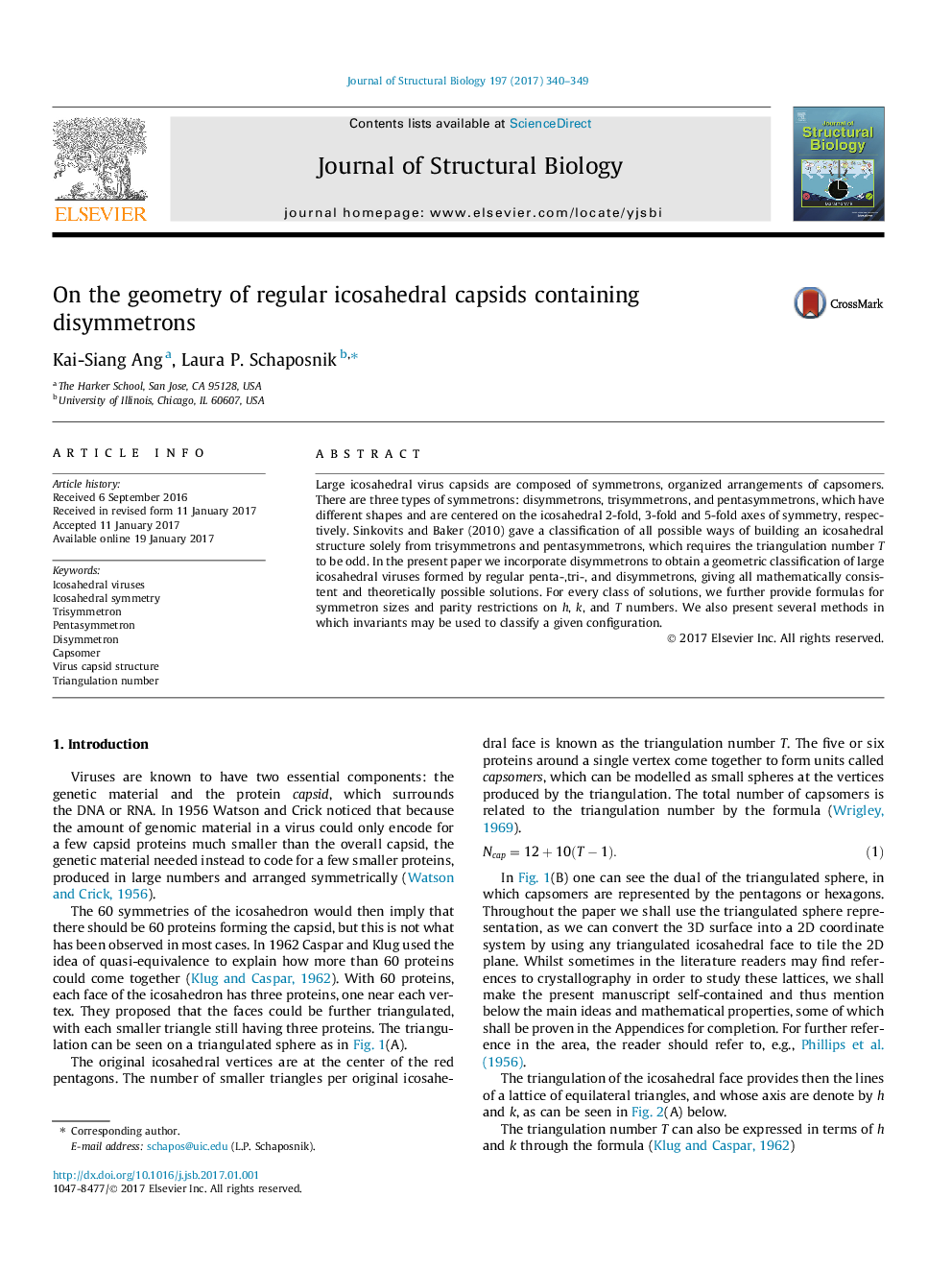| Article ID | Journal | Published Year | Pages | File Type |
|---|---|---|---|---|
| 5591510 | Journal of Structural Biology | 2017 | 10 Pages |
Abstract
Large icosahedral virus capsids are composed of symmetrons, organized arrangements of capsomers. There are three types of symmetrons: disymmetrons, trisymmetrons, and pentasymmetrons, which have different shapes and are centered on the icosahedral 2-fold, 3-fold and 5-fold axes of symmetry, respectively. Sinkovits and Baker (2010) gave a classification of all possible ways of building an icosahedral structure solely from trisymmetrons and pentasymmetrons, which requires the triangulation number T to be odd. In the present paper we incorporate disymmetrons to obtain a geometric classification of large icosahedral viruses formed by regular penta-,tri-, and disymmetrons, giving all mathematically consistent and theoretically possible solutions. For every class of solutions, we further provide formulas for symmetron sizes and parity restrictions on h, k, and T numbers. We also present several methods in which invariants may be used to classify a given configuration.
Related Topics
Life Sciences
Biochemistry, Genetics and Molecular Biology
Molecular Biology
Authors
Kai-Siang Ang, Laura P. Schaposnik,
